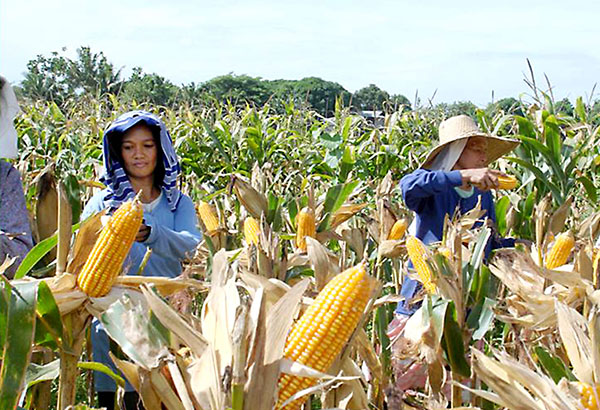
MANILA, Philippines - A study team led by Dr. Jose M. Yorobe Jr. of the University of the Philippines Los Baños (UPLB) has claimed that reduced crop insurance premiums encourage corn farmers to buy insurance policies.
The team was commissioned by the Southeast Asian Regional Center for Graduate Study and Research in Agriculture (SEARCA) to conduct a study on “Improving the Corn Insurance Program to Enhance Resilience to Climate Change.”
Headed by director Gil C. Saguiguit Jr., SEARCA is mandated to provide capacity-building interventions through graduate education, research, and knowledge management to address the agricultural and rural development needs of Southeast Asian nations, including the Philippines, its host country.
Yorobe, an associate professor at the Department of Agricultural Economics of the UPLB-College of Economics and Management (CEM), claimed that reduced premiums should be offered along with training and practical lessons on good agricultural policies (GAP).
However, Yorobe noted that farmers think of GAP as a risk management tool similar to crop insurance and consider them to be mutually exclusive.
Yorobe’s study is crucial for the intensification of corn production nationwide, particularly in the light of bumper harvests of genetically modified (GM) corn with pest- and disease-resistant traits.
Next to rice, corn is the most important crop in the Philippines.
Nearly 14 million Filipinos consider white corn as their staple, while yellow corn accounts for half of the livestock mixed feeds, Saguiguit noted.
Based on data from the Department of Agriculture (DA), 600,000 farm households depend on corn as their principal source of livelihood.
Corn is also processed into high-value products like corn starch, corn syrup, corn oil, gluten, and snack food.
Yorobe noted that farmers have become more conscious of the need for crop insurance in light of successive disasters that struck the nation from 1982 to 2012 as well as pests and diseases that caused cumulative losses of P7.09 billion for corn farmers.
Crop insurance, which is really a risk management tool, could help promote financial stability among farmers, permitting them to continue production in spite of severe weather, pests, and diseases.
The SEARCA study analyzed how GAP adoption among corn farmers could be implemented to complement the enhancement of the crop insurance system in the Philippines.
Among the appropriate GAP technologies are those concerned with the eradication of pests and crop resilience to diseases.
“The study determined the extent of awareness of farmers about these technologies and analyzed uptake patterns and identified the psychological, socioeconomic and demographic determinants of GAP adoption,” Yorobe said.
It assessed the perception and level of awareness on crop insurance system mechanisms among corn farmers and identified appropriate policy recommendations and intervention measures to improve the adoption of GAP as well as formulate an effective agricultural insurance program.
Yorobe said the study focused on Pangasinan, Isabela and Bukidnon, which are top corn-producing provinces.
For Pangasinan, the respondents came from the towns of Alcala and Bayambang, while the farmers interviewed in Isabela came from Cauayan City and Ilagan. In Bukidnon, the respondents came from Malaybalay City and Don Carlos.
Of the 426 corn farmers interviewed, only half insured their crops.
“Credit and farmers’ organization have positive and major effects on crop insurance adoption,” Yorobe said.
The corn crop insurance market grows when it offers its services to borrowing farmers and other members of farmers’ organizations. “Lower premiums and a more reliable information on the insurance products also speed up the adoption of crop insurance,” Yorobe noted.
“However, with the promotion of GAP, the possibility of farmers availing themselves of insurance decreases. GAP becomes a substitute for insurance as a risk management tool. Most farmers acknowledge the use of recommended technologies as a scheme to cope with pest, disease damage, and natural calamities,” he added.
The presence of information asymmetry – a condition in which at least some relevant information is known to some but not to all parties involved – causes insurance premiums to increase, Yorobe stressed.
“Currently, farmers are not that affected due to the modest subsidy given by the government. The subsidy, however, is not sustainable due to the high variability of fund allocation for this purpose,” he said.
“The insurance market is supply-driven and highly demand inelastic. To increase the demand for insurance, premium rates need to be greatly reduced,” Yorobe added.
“Policies designed to reduce the premium subsidy of the government and provide resiliency to climate change can strengthen the extent of GAP adoption. With this, farmers tend to be less risk-averse,” he argued.
The SEARCA study concluded that the corn crop insurance provides a temporary mechanism for farmers to be resilient under erratic environmental conditions while GAP adoption is improved.